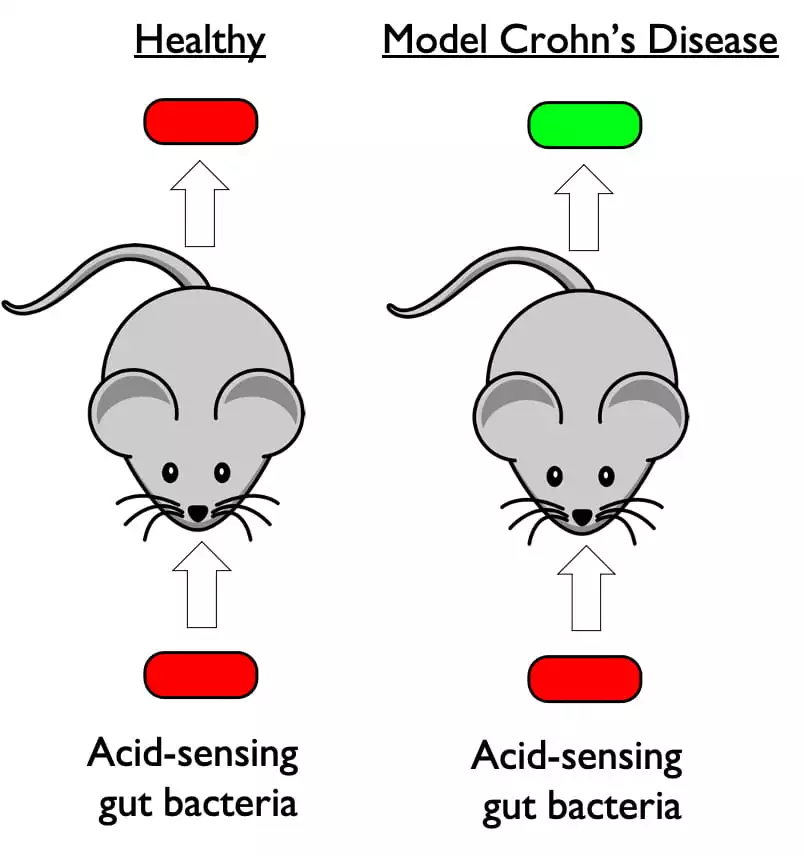Researchers from Rice University have engineered bacteria to sense pH levels in intestines and glow green in the presence of inflammation. The bacteria was tested in mouse models of inflammatory bowel disease (IBD), effectively indicating the beginning of a disease flare-up.
Back in 2017, a team from Rice University demonstrated the development of an engineered form of E. coli that could sense thiosulfate, a biomarker thought to be associated with the bowel inflammation seen in colitis. Since then, the researchers have been working to produce an engineered bacteria that can detect a more general biomarker of inflammatory bowel disease.
One of the more straightforward ways to detect bowel inflammation is by measuring intestinal pH levels. Acidosis, or low intestinal pH levels, has been associated with inflammatory flare-ups in Crohn’s disease patients, but non-invasively measuring gut pH is not a simple process.
"Normally, the pH in your intestines is around seven, which is neutral, but you get a lot of inflammation in Crohn's disease, and pH goes to something like three, which is very acidic," explains Jeffrey Tabor, co-author on the new study.
To solve this problem the researchers first studied the genes that are expressed by intestinal cells when gut pH levels become acidic. After homing in on a gene signature indicating acidosis, the researchers engineered a strain of E. coli that produces fluorescent green molecules when it encounters this particular gene signature.
Using a mouse model of Crohn’s disease the researchers then validated this pH-sensing bacteria. Through standard optical equipment the researchers could effectively measure the brightness of these fluorescent molecules and correlate this with levels of intestinal acidity.

"Colonizing this bacterial strain was the perfect biological tool to monitor acidosis during active inflammation," says Sean Colgan, another co-author on the study. "Correlating intestinal gene expression with the bacterial pH-sensing bacteria proved to be a useful and valuable set of biomarkers for active inflammation in the intestine."
The idea of engineering bacteria to detect disease is still relatively new but potential applications for this technology are immense. Alongside diagnostic uses, the technology could hypothetically be used to actively treat cancer, metabolic disease and pathogenic infection.
“With the development of metabolic engineering and synthetic biology, engineering of probiotics opens up possibilities of designing microbes to target specific tissues and cells rather than the whole body and creation of novel probiotics with desired characteristics and functionalities,” a team of researchers wrote in a review article published last year.
In this instance the researchers propose the acidosis-sensing bacteria could easily be incorporated into food and used as an early-warning system for IBD sufferers. Disease flare-ups could hypothetically be caught early by color coding fecal output.
This field of research is still nascent and, while there may be no one-size-fits-all approach to gut microbiome research, this kind of pH-sensing bacterium could be helpful to many IBD patients. Tabor says human clinical trials testing the bacteria may begin in the next few years.
The new study was published in the journal PNAS.
Source: Rice University




